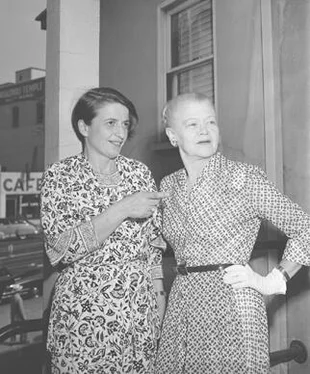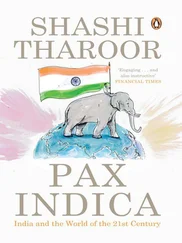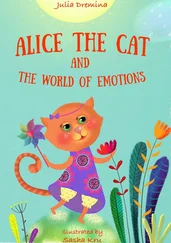Anne Heller - Ayn Rand and the World She Made
Здесь есть возможность читать онлайн «Anne Heller - Ayn Rand and the World She Made» весь текст электронной книги совершенно бесплатно (целиком полную версию без сокращений). В некоторых случаях можно слушать аудио, скачать через торрент в формате fb2 и присутствует краткое содержание. Жанр: Биографии и Мемуары, на английском языке. Описание произведения, (предисловие) а так же отзывы посетителей доступны на портале библиотеки ЛибКат.
- Название:Ayn Rand and the World She Made
- Автор:
- Жанр:
- Год:неизвестен
- ISBN:нет данных
- Рейтинг книги:5 / 5. Голосов: 1
-
Избранное:Добавить в избранное
- Отзывы:
-
Ваша оценка:
- 100
- 1
- 2
- 3
- 4
- 5
Ayn Rand and the World She Made: краткое содержание, описание и аннотация
Предлагаем к чтению аннотацию, описание, краткое содержание или предисловие (зависит от того, что написал сам автор книги «Ayn Rand and the World She Made»). Если вы не нашли необходимую информацию о книге — напишите в комментариях, мы постараемся отыскать её.
Ayn Rand and the World She Made — читать онлайн бесплатно полную книгу (весь текст) целиком
Ниже представлен текст книги, разбитый по страницам. Система сохранения места последней прочитанной страницы, позволяет с удобством читать онлайн бесплатно книгу «Ayn Rand and the World She Made», без необходимости каждый раз заново искать на чём Вы остановились. Поставьте закладку, и сможете в любой момент перейти на страницу, на которой закончили чтение.
Интервал:
Закладка:
In any case, up to the years of the revolution, Anna and Zinovy’s marriage was peaceable and conventional rather than ardent. He worked long hours and didn’t spend much time in the apartment; she managed the girls’ social activities, education, health regimens, and religious training until they entered school at eight or nine—since, like most boys and girls from the Russian middle and upper classes, the Rosenbaum sisters were educated at home until relatively late in childhood. According to Rand, her father, who wasn’t religious, tolerated her mother’s Sabbath and holiday celebrations with a “better safe than sorry” shrug. Rand herself, later a strict atheist who rarely spoke about her Jewish ancestry, believed in God and accepted her mother’s religious observances as a natural part of life—until she made a conscious decision to become a nonbeliever during the second year of the revolution, at the traditional male bar mitzvah age of thirteen.
Rand’s first conscious memory of experimenting with the idea of God took place at age six, she recalled, when she and a maternal cousin decided to pray for a little white kitten belonging to their grandmother Kaplan. The kitten was sick and dying, and Rand’s cousin proposed that if they “prayed sincerely” God would hear their prayers and save the kitten. They retreated to a corner of the room and prayed, but the kitten died, and though Rand still halfheartedly believed in God, she wasn’t surprised by the ineffectuality of prayer; she hadn’t really believed that it would work, she said. Later, in the terrifying year of 1918, she must often have heard the kind of fatalistic Russian Orthodox talk of God’s will and the necessity to follow Christ’s example of suffering that would infuriate her all her life. She decided to cast her lot with man—that is, with her own observations and sense of entitlement and justice—rather than with an oppressive, inscrutable, unjust, and alien deity.
Although her parents tried to protect her from the political and ethnic strife all around her during childhood, they could hardly have been successful. From the age of five or six, Ayn Rand took everything in, including the ugly and nonsensical pieties and prejudices of neighbors and official spokesmen who treated Jews as, at best, second-class human beings. Often, their pretext for such treatment was that the Jews were the greedy entrepreneurs, rabid industrialists, and ruthless bankers who were spoiling Russia’s “pure” Slavic traditions and fomenting labor unrest. In such circumstances, Rand’s love for her self-made father was strongly roused. The results would be seen in her pro-individualist, proindustrial novels, which more than one commentator has also viewed as an impassioned defense of gifted, productive Jews.
Rand received attention and praise from her family and later, from her teachers and classmates, primarily, if not only, for being a startlingly intelligent child. (Judging by her lightning-quick logic and depth of insight as an adult, she must have been frighteningly intelligent, observed Rand acquaintance Robert Bidinotto.) Yet her actual ideas and feelings were of little interest to anyone, including her extended family, except her youngest sister, Nora. The household was busy with her father’s growing business and her mother’s and middle sister’s comings and goings, and the women, especially, had little patience with Rand’s odd musings. In her first novel, We the Living , she writes that Kira’s family “shrugged impatiently at what they called Kira’s feelings. … They were not feelings to [Kira’s sister Lydia] but only Kira’s feelings [italics added].” When Rand entered school, the same was true of her classmates. The intensely thoughtful child was not only solitary, but she was also awkward and offbeat. She remembered being aware that her extreme shyness and violent intensity put people off, but she was sure that such social awkwardness was merely a technical fault and that other people were wrong not to understand and appreciate her. She was selfconsciously different from others, as if by choice. But she was painfully lonely.
Little Nora trailed after her eldest sister, providing a worshipful chorus for Rand’s enthusiasms and dislikes. Because they favored the same books and pictures, Rand thought Nora was like her, with an almost identical natural bravery, sensibility, and style. In this, she mistook Nora’s imitation of her for the girl’s authentic inner self. Eighty years later, the sister would say bitterly that she was merely Rand’s “shadow and yes-man.” In all of her most crucial relationships, Rand would see others favorably largely to the degree that they mirrored her unusual self.
That’s where stories—both those she read and those she was beginning to write—came in. At the age of eight or nine, just before creating her own first stories, she read two children’s books that electrified her hopes and helped to set her course; one of them would become a kind of template for some of her most famous work. The first, a mini-biography belonging to her sister Natasha, recounted the lonely girlhood of Catherine the Great, the late-eighteenth-century czarina who, half a century after the reign of Peter, brought the ideas of the European Enlightenment to Russia. It presented Catherine as an unusually bright little girl who was overlooked and underestimated by her aristocratic family and friends because she was odd and homely: “something between a misfit and an ugly duckling,” as Rand remembered the character. Yet Catherine was destined to outshine all her prettier rivals and bring a culturally backward Russia closer to the industrially advancing West. In the story, a fortune-teller at a party sees Catherine’s future greatness in the shape of an invisible crown engraved on her brow, much to the envy and disbelief of the other girls and their mothers. Young Rand was sure that she, too, was meant for an exceptional fate, and wished that, like the fortune-teller in the story, someone would notice the special mark on her brow. She was a child of destiny, she told herself. Nobody knew it yet, but everybody would find out. Like many of Rand’s predictions about her future, this one would come true.
Later in the same year, 1914, she encountered a boys’ serial adventure story called The Mysterious Valley in one of the French children’s magazines her mother subscribed to. Written by Maurice Champagne, an author of children’s books, and illustrated by René Giffey, it was set in British-ruled India in 1911—contemporaneous with Rand’s time, but set in an exotic place, so the story’s heart-stopping action may have seemed plausible to her. As the tale opens, a dashing British infantry captain named Cyrus Paltons and four of his fellow officers have been snatched from the field by trained Bengali tigers and carried to a clique of bloodthirsty Hindu shamans in a hidden valley in the Himalayan Mountains of West Bengal—a beautiful valley with noticeable resemblances to the hiding place of the striking businessmen in Rand’s 1957 novel, Atlas Shrugged . Cyrus, imprisoned with his peers deep in a cave beneath the valley floor, is brave, purposeful, and, according to Bill Bucko’s translation, “arrogant,” a characteristic that will become a marker for Ayn Rand’s future heroes. He is also handsome. The original pen-and-ink illustrations show him as, in Rand’s words many years later, “my present kind of hero: tall, long-legged, wearing soldier’s leggings but no jacket, just … an open-collared shirt, torn in front, open very low, sleeves rolled at the elbows and hair falling down over one eye.” Gripping the bars of a bamboo cage, he shouts defiant threats at the death-goddess-worshipping Hindus who surround him, while his friends cower in a corner. Meanwhile, a rescue team made up of two junior officers and a supremely rational French archaeologist track Cyrus and the others to the cave. After many brushes with gruesome forms of sacrificial death, Cyrus escapes and leads his friends, rescuers, and a beautiful young British woman (soon to be his wife) safely out of the valley. As they stand looking back from above, fires and a flood consume the valley and erase its bloodthirsty inhabitants from existence.
Читать дальшеИнтервал:
Закладка:
Похожие книги на «Ayn Rand and the World She Made»
Представляем Вашему вниманию похожие книги на «Ayn Rand and the World She Made» списком для выбора. Мы отобрали схожую по названию и смыслу литературу в надежде предоставить читателям больше вариантов отыскать новые, интересные, ещё непрочитанные произведения.
Обсуждение, отзывы о книге «Ayn Rand and the World She Made» и просто собственные мнения читателей. Оставьте ваши комментарии, напишите, что Вы думаете о произведении, его смысле или главных героях. Укажите что конкретно понравилось, а что нет, и почему Вы так считаете.












